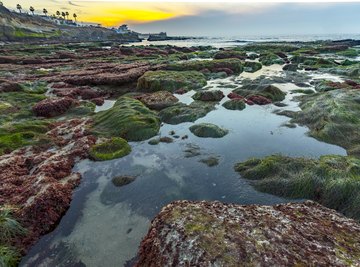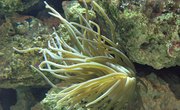
Humanity depends on the existence of marine life. However, various human activities can damage marine life. Incorporating marine biology projects and experiments into the classroom can help students learn more about marine biology, helping them develop a love of the ocean. Students can also participate in special marine biology programs that can allow them to earn college credits.
Contributing to Marine Biology Knowledge
Students can feel like they're making a difference by participating in real projects carried out by marine biology advocates. For example, marine biology information is scattered throughout the Internet and MarineBio, an advocacy group based in Encinitas, California, is in the process of finding and collecting a database of marine biology information so that those interested in marine biology can track down up-to-date information more easily.
Marine Biology Laboratory Activities
Organizations such as the NOAA's National Undersea Research Laboratory are working to connect students with research projects that they can participate in, helping them get more hands-on experience with current marine biology research. These students not only learn about curriculum, but also develop experience with laboratory procedures. For this experience to positively impact student learning, the students must be involved in all aspects of the research process. Getting students directly involved in the research can help spark interest in marine biology as a possible subject to study. Students may participate in dives, collect data, participate in data analysis, participate in scientific report writing and present the information to others.
Plankton Experiments
Plankton play a major role in marine biology, since most organisms either consume the plankton or consume an organism that consumes plankton. Students working near the ocean can collect plankton in a jar. After collecting the plankton, students can place some of the water on a slide and can look at the amount of plankton. The students can then write down the plankton numbers on the data sheet.
College Credits
During the summer, programs such as the Baja Mexico Sea Quest! allow high school students to explore the Gulf of California, one of the most biologically diverse marine systems in the world. This area has over 800 species of fish and and one third of the worlds cetaceans. High school students participating can often get college course credit at a particular university so that they'll already have a college course under their belts. The learning aspects of the course include avian ecology and field surveys, wild sea lion population study and investigations into animal and plant adaptations. Websites such as ActionQuest Adventure try to set up students with similar opportunities. Many are internships where students can get work experience that can help them find work in the future.
References
About the Author
Charles Pearson has written as a freelancer since 2009. He has a B.S. in literature from Purdue University Calumet and is currently working on his M.A. He has written the ebooks "Karate You Can Teach Your Kids," "Macadamia Growing Handout" and "The Raw Food Diet."
